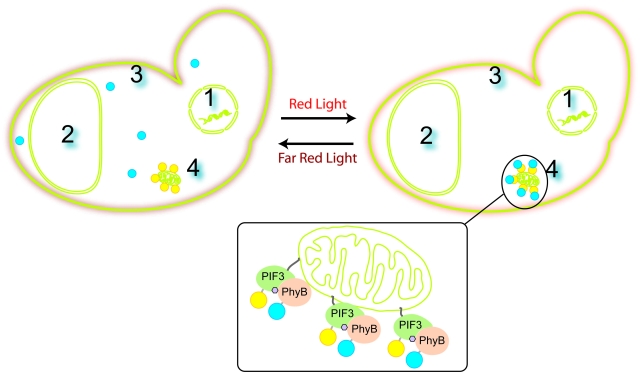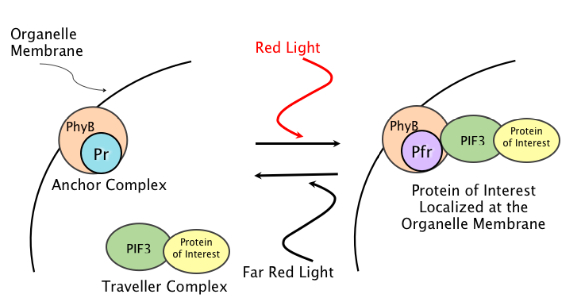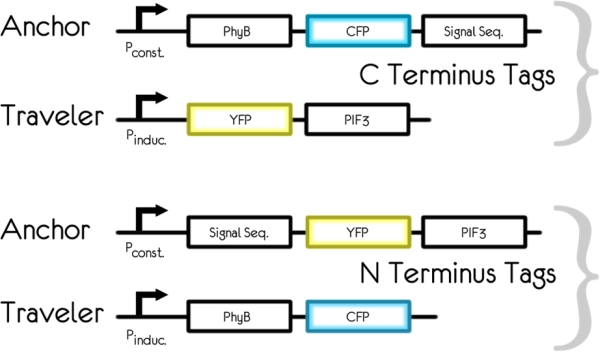Team:MIT/Projects/Project2
From 2009.igem.org
(→Mechanism) |
(→Mechanism) |
||
| Line 23: | Line 23: | ||
<center>[[Image:mechanism.jpg]]</center> | <center>[[Image:mechanism.jpg]]</center> | ||
| - | =Materials Methods= | + | =Materials Methods= |
Revision as of 15:37, 21 October 2009
Light-inducible protein localization in Yeast

Objective
We set out to create a quick, reversible switch to control the localization and delocalization of proteins of interests of to various targets within a yeast cell, such as the nuclear membrane, plasma membrane, mitochondrial membrane, and vacuole.
Motivation
To fully control cellular functioning, it would be useful to have a modular system that can provide both temporal and spatial control over any protein of interest within a cell. In other words, we should be able to control both when a gene is expressed and where the protein is functioning. The existing PhyB-PIF3 system provides temporal control over gene expression by acting as a transcriptional regulator. However, we plan to adapt the PhyB-PIF3 system to also allow for spatial control over a protein by creating switchable control over protein targeting. Such a system can potentially be used as an on-off switch for essential genes by controlling movement the protein to and from where the protein functions in the cell. In addition, the system can also potentially be used to control cell cycling and differentiation. Furthermore, reversible control of protein localization and delocalization can be useful as a tool to study diffusion rates within a cell.
Background on PhyB-PIF3 System

Mechanism

Materials Methods

>Picture showing constructs with restriction sites for both hr and sequential cloning
> Photograph of LED arrays
Plans:
 "
"